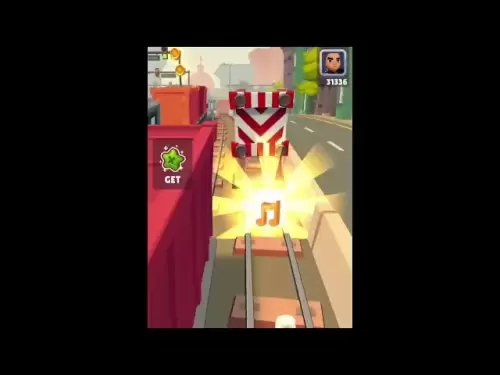-
 Bitcoin
Bitcoin $109,583.2239
0.19% -
 Ethereum
Ethereum $2,583.4612
0.48% -
 Tether USDt
Tether USDt $1.0003
-0.04% -
 XRP
XRP $2.2681
0.70% -
 BNB
BNB $659.9218
-0.52% -
 Solana
Solana $151.4961
-0.37% -
 USDC
USDC $0.9999
-0.02% -
 TRON
TRON $0.2861
1.20% -
 Dogecoin
Dogecoin $0.1718
0.04% -
 Cardano
Cardano $0.5960
-0.07% -
 Hyperliquid
Hyperliquid $40.1233
2.85% -
 Sui
Sui $2.9974
2.48% -
 Bitcoin Cash
Bitcoin Cash $497.1279
-1.76% -
 Chainlink
Chainlink $13.7275
-0.22% -
 UNUS SED LEO
UNUS SED LEO $9.0241
0.70% -
 Avalanche
Avalanche $18.5536
-0.88% -
 Stellar
Stellar $0.2421
1.39% -
 Toncoin
Toncoin $2.8593
-0.51% -
 Shiba Inu
Shiba Inu $0.0...01187
-0.07% -
 Litecoin
Litecoin $90.0023
2.90% -
 Hedera
Hedera $0.1590
2.79% -
 Monero
Monero $322.1495
0.00% -
 Polkadot
Polkadot $3.5453
-1.00% -
 Dai
Dai $1.0000
-0.01% -
 Bitget Token
Bitget Token $4.5733
-1.06% -
 Ethena USDe
Ethena USDe $1.0002
-0.01% -
 Uniswap
Uniswap $7.6345
3.03% -
 Aave
Aave $279.2583
0.47% -
 Pepe
Pepe $0.0...01003
-1.52% -
 Pi
Pi $0.4941
-0.32%
BitFlyer contract beginner tutorial
In futures trading on BitFlyer, leverage allows traders to borrow funds and expand their trading potential, but it also carries increased risk and should be used judiciously to avoid significant financial losses.
Nov 18, 2024 at 06:14 pm

BitFlyer Contract Beginner Tutorial
Step 1: Understanding Crypto Futures Contracts
Crypto futures contracts are derivative instruments that provide traders with a standardized way to speculate on the future price of an underlying cryptocurrency, such as Bitcoin or Ethereum. Unlike spot trading, where buyers and sellers trade cryptocurrencies at their current market price, futures contracts allow traders to lock in a buy or sell price at a predetermined date in the future.
Key advantages of futures contracts include their leverage, flexibility, and ability to hedge against price fluctuations. However, traders must also be aware of the inherent risks, including the potential for significant profit and loss.
Step 2: Opening an Account with BitFlyer
To begin trading futures contracts on BitFlyer, the first step is to open an account. The registration process is straightforward and can be completed online. You will need to provide personal information, verify your identity, and set up two-factor authentication for enhanced security.
Once your account is active, you can fund it with Japanese Yen (JPY), Euro (EUR), or US Dollar (USD). You can also transfer cryptocurrencies into your account for use as collateral.
Step 3: Navigating the BitFlyer Futures Platform
The BitFlyer futures platform is designed to be user-friendly for both experienced and novice traders. The interface is intuitive, providing quick access to market data, trading tools, and account management functions.
The top menu bar includes links to the main sections of the platform, such as "Trade," "Account," and "Support." The central section displays real-time market data for the available futures contracts, including the last traded price, bid-ask spread, and trading volume.
Step 4: Placing a Futures Order
To place a futures order, you must select the desired cryptocurrency, contract type, and order details. BitFlyer offers various order types to accommodate different trading strategies, including limit orders, market orders, and stop orders.
Limit orders allow you to specify a specific price at which you want to buy or sell a contract. Market orders execute immediately at the current market price. Stop orders become active only when the market price reaches a predetermined trigger level.
Step 5: Managing Risk and Stop-Loss Strategies
Risk management is paramount in futures trading, and BitFlyer provides several tools to help traders mitigate potential losses. One effective strategy is the stop-loss order, which automatically exits a position if the price moves against you beyond a predefined level.
Stop-loss orders can limit losses to a specific amount, preserving trading capital and preventing emotions from influencing trading decisions.
Step 6: Monitoring Position and Adjusting Strategies
Once you have placed an order, it is crucial to monitor its status. The "Positions" section of the BitFlyer platform displays the details of all open positions, including the entry price, current price, profit/loss, and other relevant information.
Traders can adjust their strategies by modifying the position parameters, such as the stop-loss price or the leverage level. Adjustments should be made based on market conditions and the trader's overall risk tolerance.
Step 7: Closing a Futures Position
When the time comes to close a futures position, you have two options: you can either manually close the position by placing an opposite order, or you can let the position expire naturally on its designated expiry date.
Manual closing allows traders to secure their profit or limit their losses at a specific price. Conversely, letting the position expire can result in automatic execution of the contract at the settlement price.
Step 8: Understanding Margin Trading and Leverage
Margin trading is a type of futures trading that allows traders to amplify their potential profits and losses by borrowing funds from BitFlyer. The borrowed funds increase the trader's purchasing power, enabling them to execute trades with a larger notional value.
Leverage is expressed as a ratio, such as 10:1 or 20:1. A higher leverage ratio increases the potential for both profit and loss. Traders must use margin and leverage responsibly, as excessive leverage can lead to significant financial losses.
Disclaimer:info@kdj.com
The information provided is not trading advice. kdj.com does not assume any responsibility for any investments made based on the information provided in this article. Cryptocurrencies are highly volatile and it is highly recommended that you invest with caution after thorough research!
If you believe that the content used on this website infringes your copyright, please contact us immediately (info@kdj.com) and we will delete it promptly.
- BONK Price Prediction: Meme Coin Mania and What's Next?
- 2025-07-04 12:30:13
- NYAG, Stablecoins, and FDIC Protections: Navigating the Regulatory Maze
- 2025-07-04 13:10:15
- Level Up Your DeFi Game: Phantom Wallet and the Ultimate DeFi Experience
- 2025-07-04 13:10:15
- Bitcoin Surge: Breaking Down the $109,000 Barrier and the Road to $165,000?
- 2025-07-04 12:30:13
- Solana ETF Inflows & Snorter Token: A New Era for Meme Coin Trading?
- 2025-07-04 12:50:12
- Ripple, Stablecoin, and First Bank: Decoding the Latest Moves in Crypto
- 2025-07-04 12:50:12
Related knowledge

How to identify the contract value range in combination with the market profile?
Jul 02,2025 at 10:56pm
Understanding the Market ProfileTo effectively identify the contract value range in combination with the market profile, it's essential to first understand what each concept entails. The market profile is a framework that helps traders visualize how price and time interact across a given period, typically a trading day or session. It provides insights i...

How to use the price slope to filter the false breakthrough signal of the contract?
Jun 20,2025 at 06:56pm
Understanding the Concept of Price Slope in Contract TradingIn contract trading, especially within cryptocurrency derivatives markets, price slope refers to the rate at which the price changes over a specific time period. It helps traders assess the strength and sustainability of a trend. A steep slope may indicate strong momentum, while a shallow slope...

How to determine the expected volatility of the contract through the volatility cone?
Jun 19,2025 at 12:28pm
Understanding the Basics of Volatility in Cryptocurrency ContractsIn the realm of cryptocurrency trading, volatility is a key metric that traders use to assess potential risk and reward. When dealing with futures contracts, understanding how volatile an asset might become over time is crucial for position sizing, risk management, and strategy developmen...

How to formulate a contract intraday trading plan in combination with the pivot point system?
Jun 21,2025 at 03:42pm
Understanding the Basics of Pivot Points in Cryptocurrency TradingPivot points are technical analysis tools used by traders to identify potential support and resistance levels. These levels are calculated using the previous day's high, low, and closing prices. In the context of cryptocurrency trading, where markets operate 24/7, pivot points help trader...

How to adjust the contract position ratio through the price fluctuation entropy?
Jun 22,2025 at 11:42am
Understanding Price Fluctuation Entropy in Cryptocurrency ContractsIn the world of cryptocurrency futures trading, price fluctuation entropy is a relatively new concept used to measure market volatility and uncertainty. It derives from information theory, where entropy refers to the degree of randomness or unpredictability in a system. In crypto contrac...

How to use the volume swing indicator to predict the contract volume-price divergence?
Jun 18,2025 at 11:42pm
Understanding the Volume Swing IndicatorThe volume swing indicator is a technical analysis tool used primarily in cryptocurrency trading to evaluate changes in volume over time. Unlike price-based indicators, this metric focuses solely on trading volume, which can provide early signals about potential market reversals or continuations. The key idea behi...

How to identify the contract value range in combination with the market profile?
Jul 02,2025 at 10:56pm
Understanding the Market ProfileTo effectively identify the contract value range in combination with the market profile, it's essential to first understand what each concept entails. The market profile is a framework that helps traders visualize how price and time interact across a given period, typically a trading day or session. It provides insights i...

How to use the price slope to filter the false breakthrough signal of the contract?
Jun 20,2025 at 06:56pm
Understanding the Concept of Price Slope in Contract TradingIn contract trading, especially within cryptocurrency derivatives markets, price slope refers to the rate at which the price changes over a specific time period. It helps traders assess the strength and sustainability of a trend. A steep slope may indicate strong momentum, while a shallow slope...

How to determine the expected volatility of the contract through the volatility cone?
Jun 19,2025 at 12:28pm
Understanding the Basics of Volatility in Cryptocurrency ContractsIn the realm of cryptocurrency trading, volatility is a key metric that traders use to assess potential risk and reward. When dealing with futures contracts, understanding how volatile an asset might become over time is crucial for position sizing, risk management, and strategy developmen...

How to formulate a contract intraday trading plan in combination with the pivot point system?
Jun 21,2025 at 03:42pm
Understanding the Basics of Pivot Points in Cryptocurrency TradingPivot points are technical analysis tools used by traders to identify potential support and resistance levels. These levels are calculated using the previous day's high, low, and closing prices. In the context of cryptocurrency trading, where markets operate 24/7, pivot points help trader...

How to adjust the contract position ratio through the price fluctuation entropy?
Jun 22,2025 at 11:42am
Understanding Price Fluctuation Entropy in Cryptocurrency ContractsIn the world of cryptocurrency futures trading, price fluctuation entropy is a relatively new concept used to measure market volatility and uncertainty. It derives from information theory, where entropy refers to the degree of randomness or unpredictability in a system. In crypto contrac...

How to use the volume swing indicator to predict the contract volume-price divergence?
Jun 18,2025 at 11:42pm
Understanding the Volume Swing IndicatorThe volume swing indicator is a technical analysis tool used primarily in cryptocurrency trading to evaluate changes in volume over time. Unlike price-based indicators, this metric focuses solely on trading volume, which can provide early signals about potential market reversals or continuations. The key idea behi...
See all articles

























































































